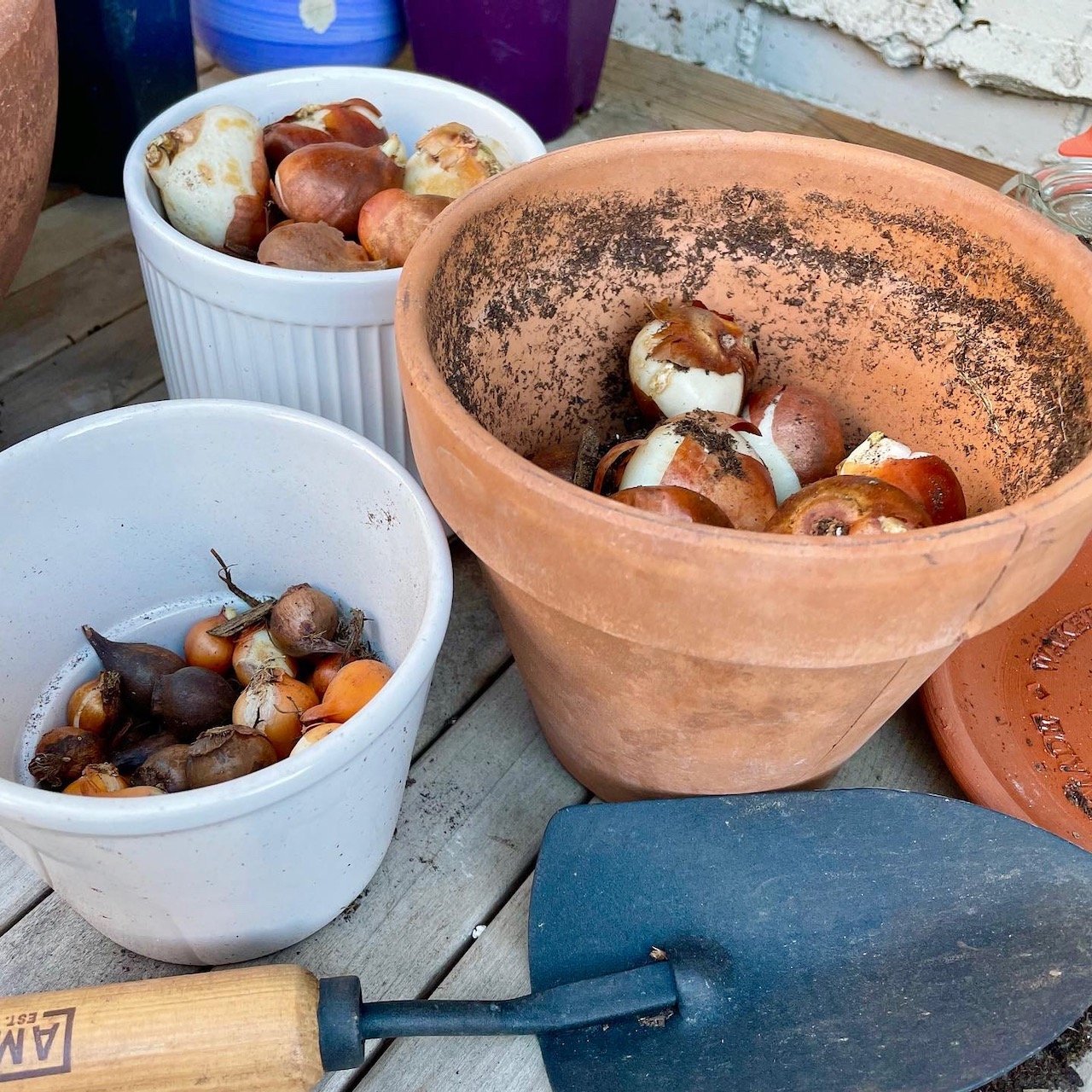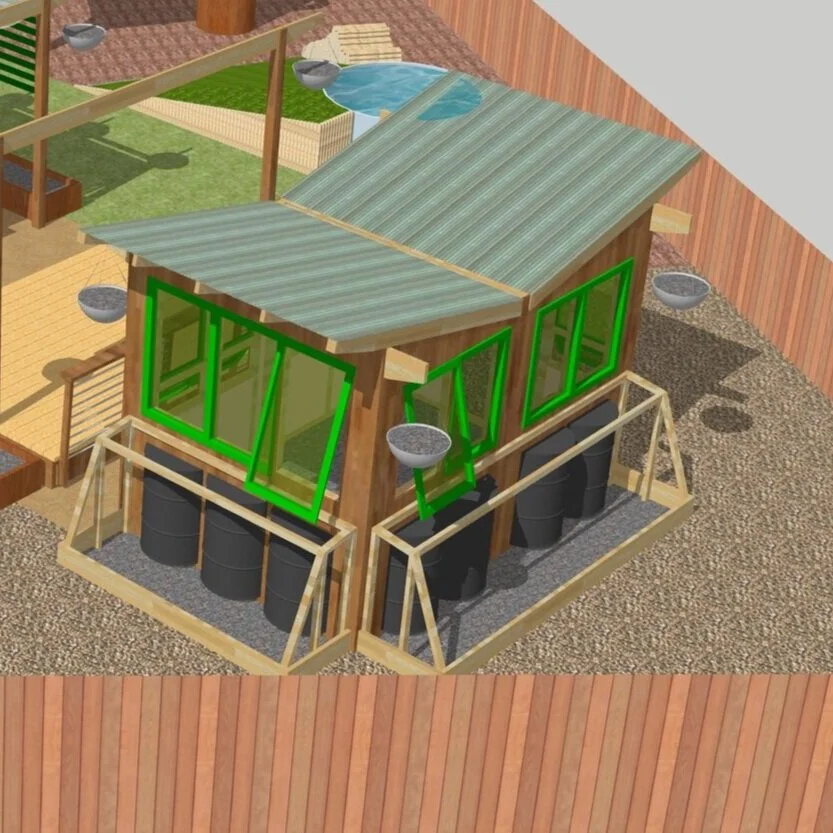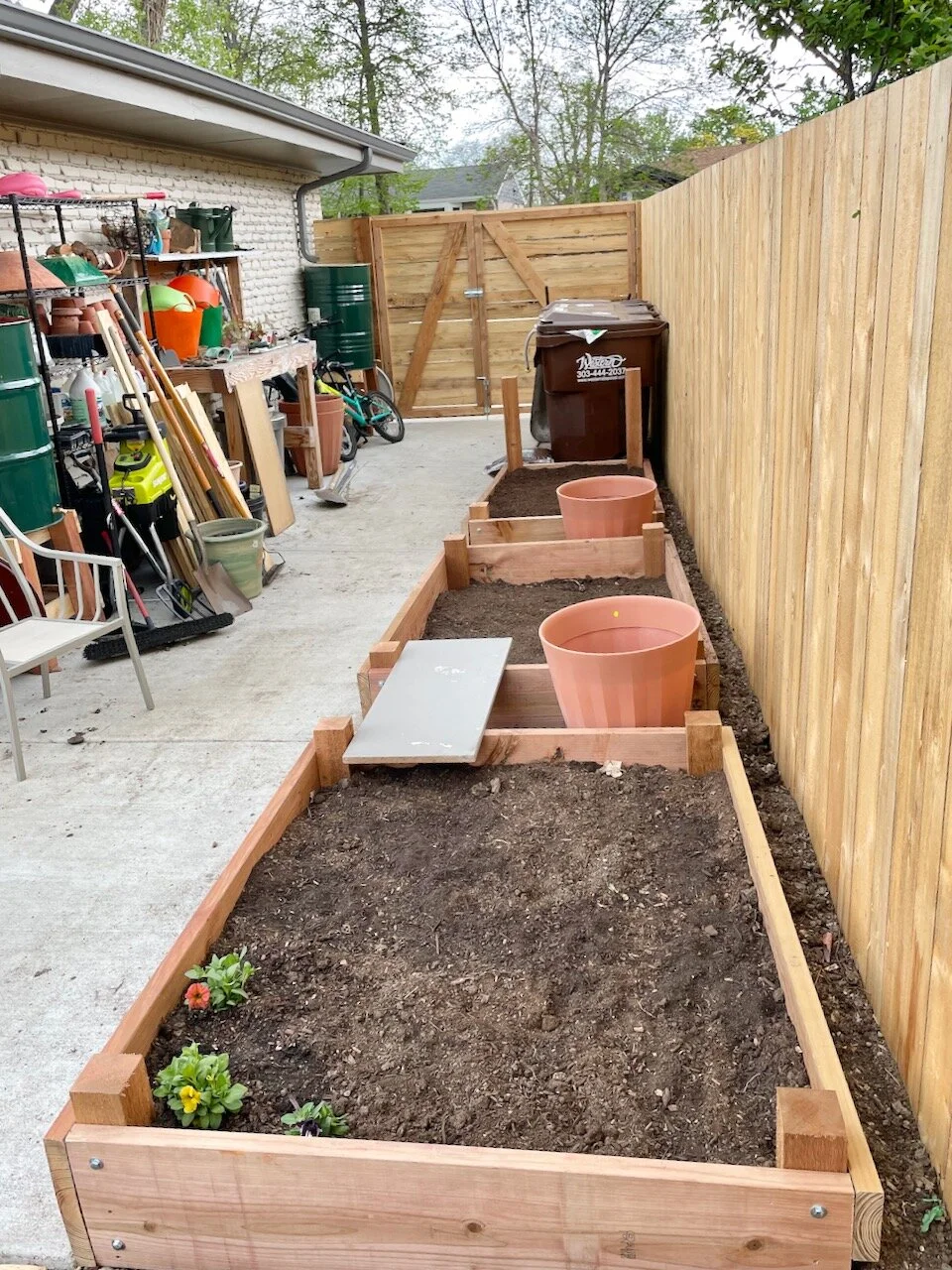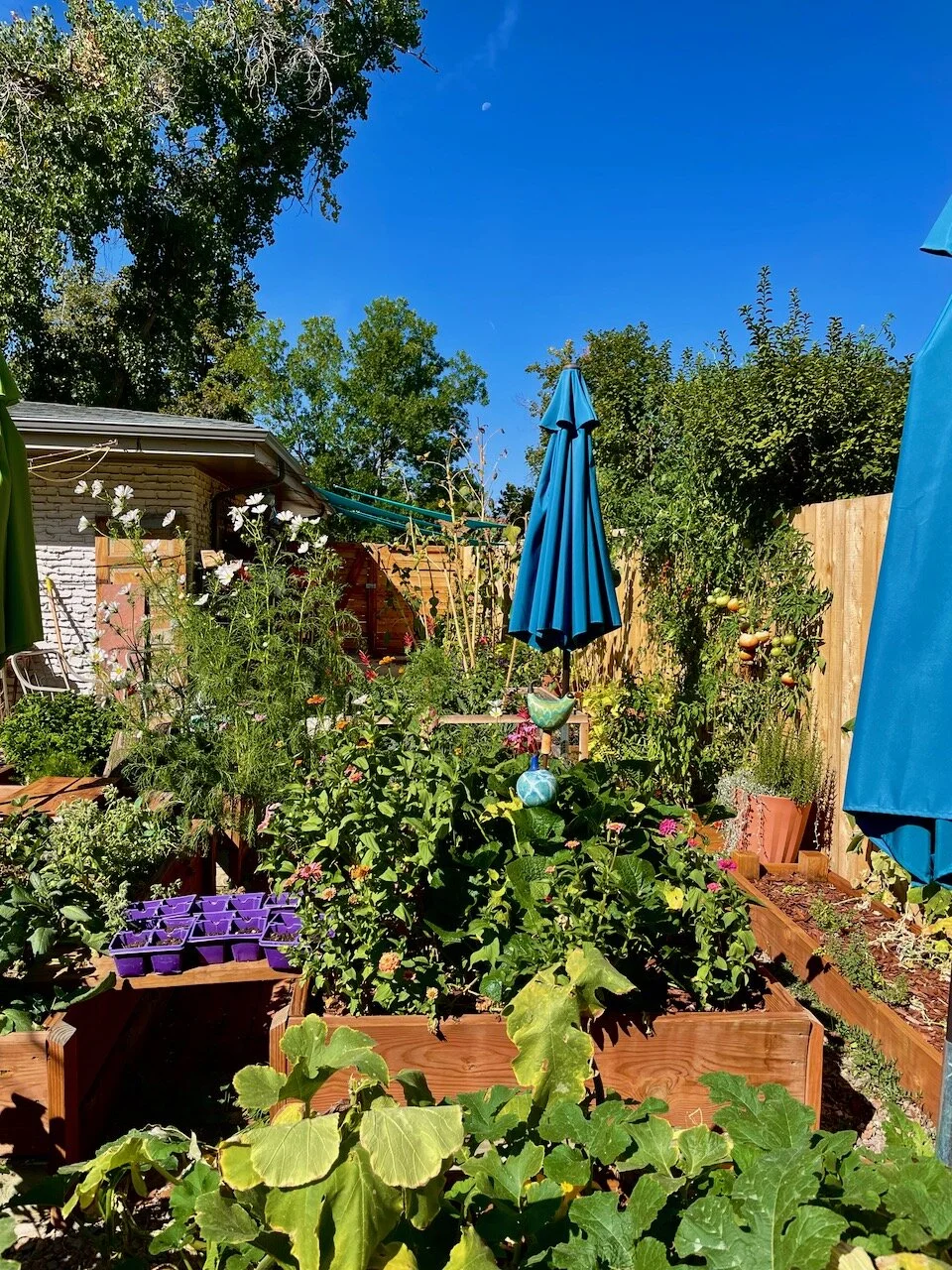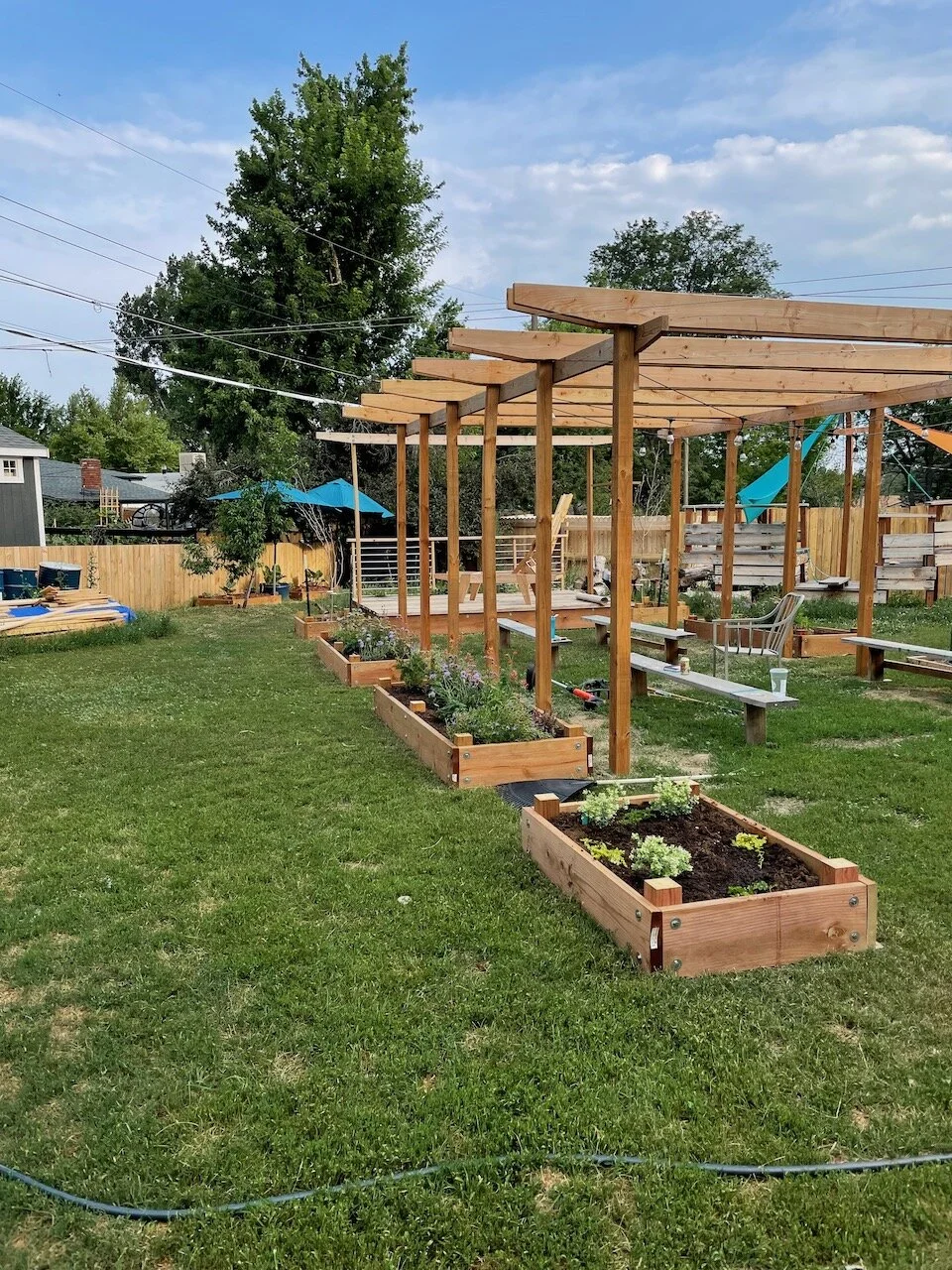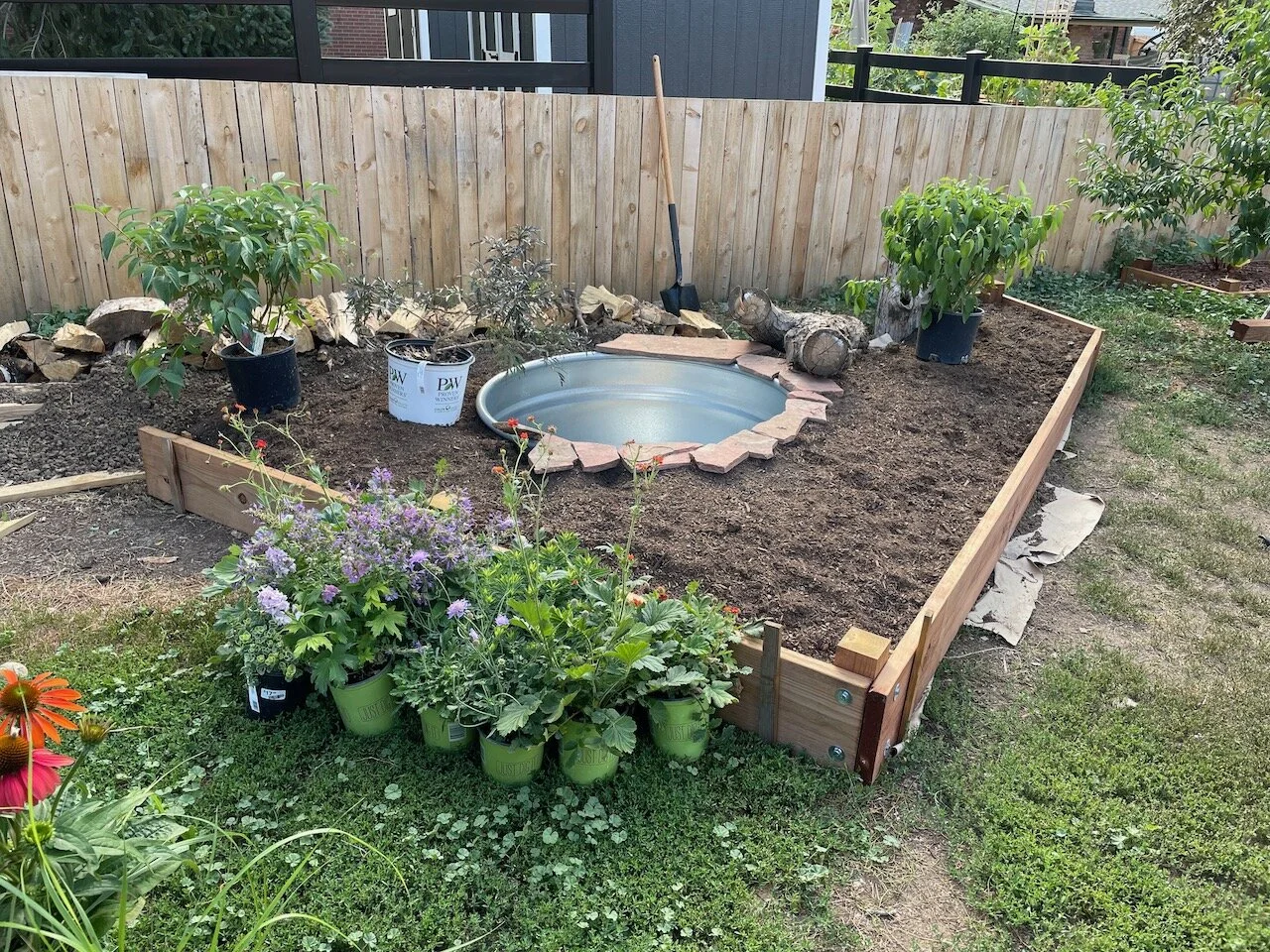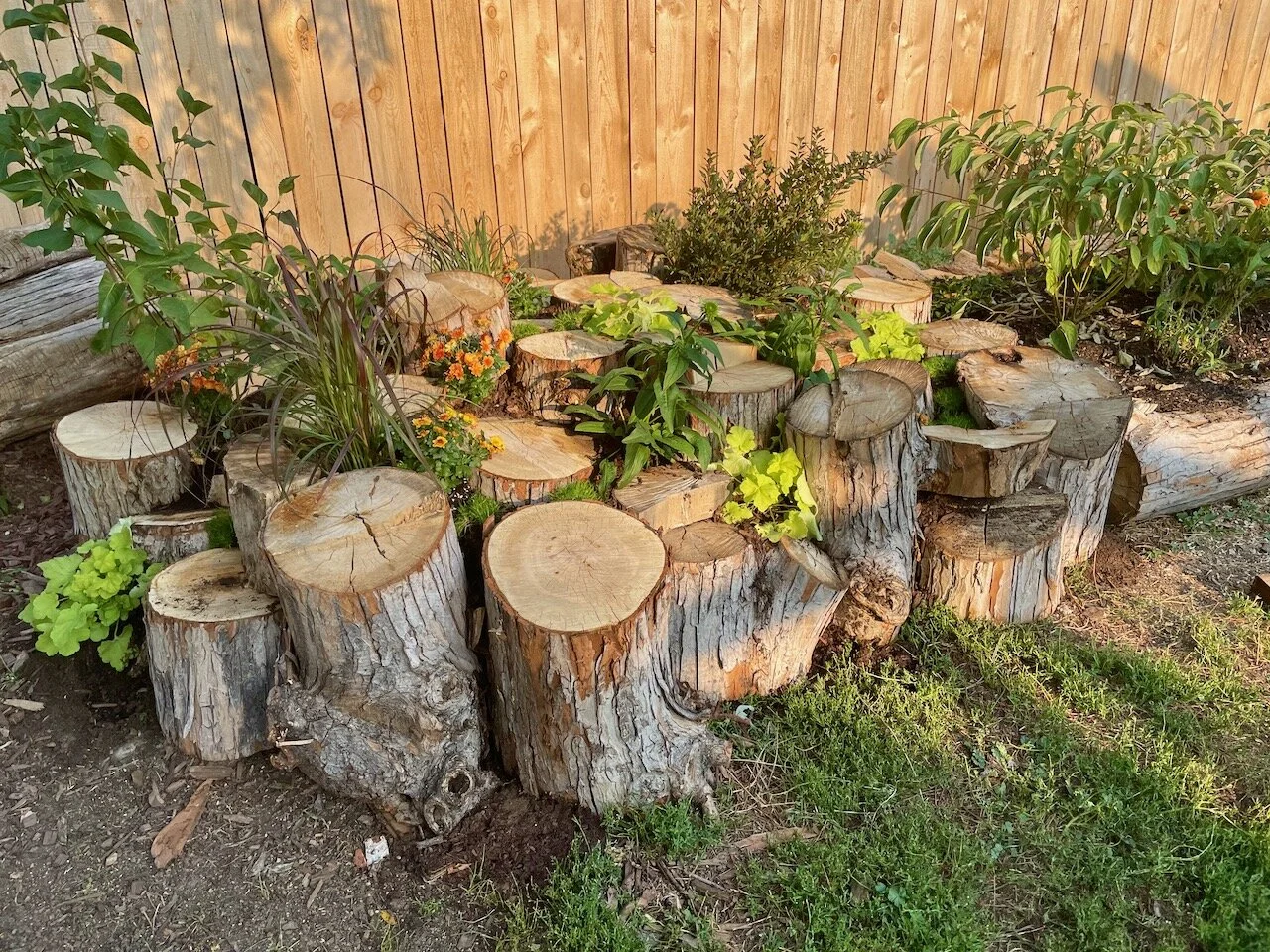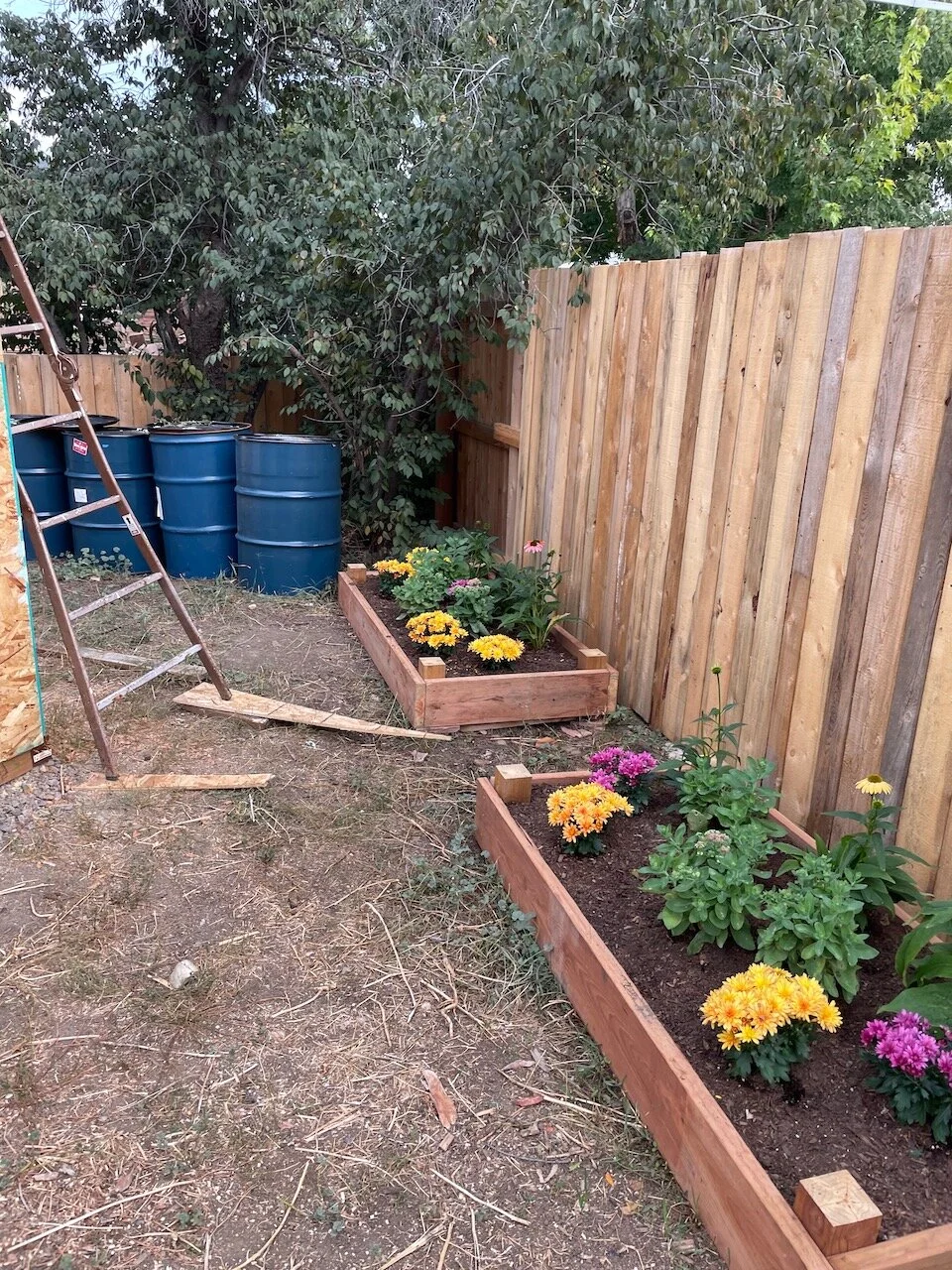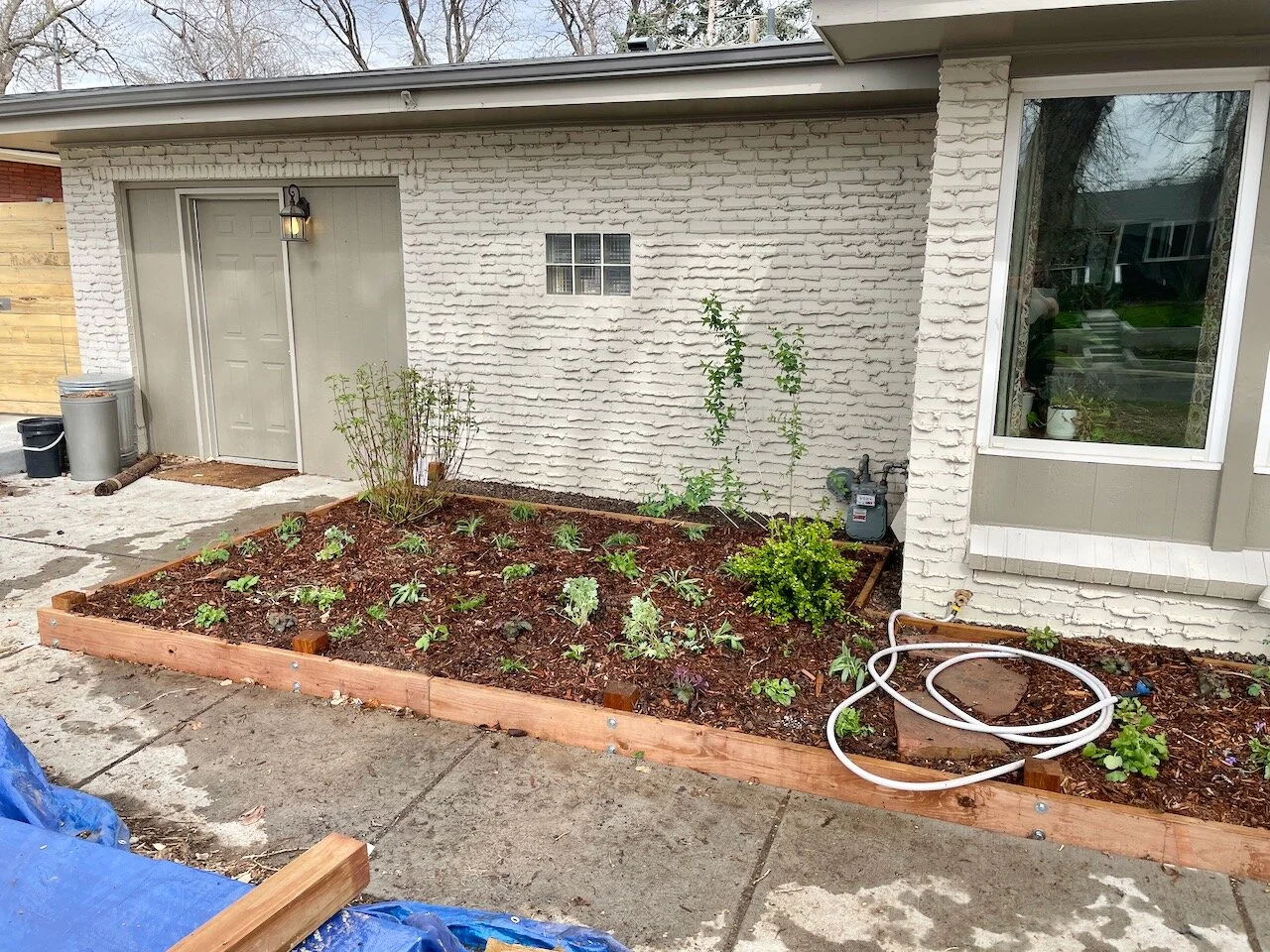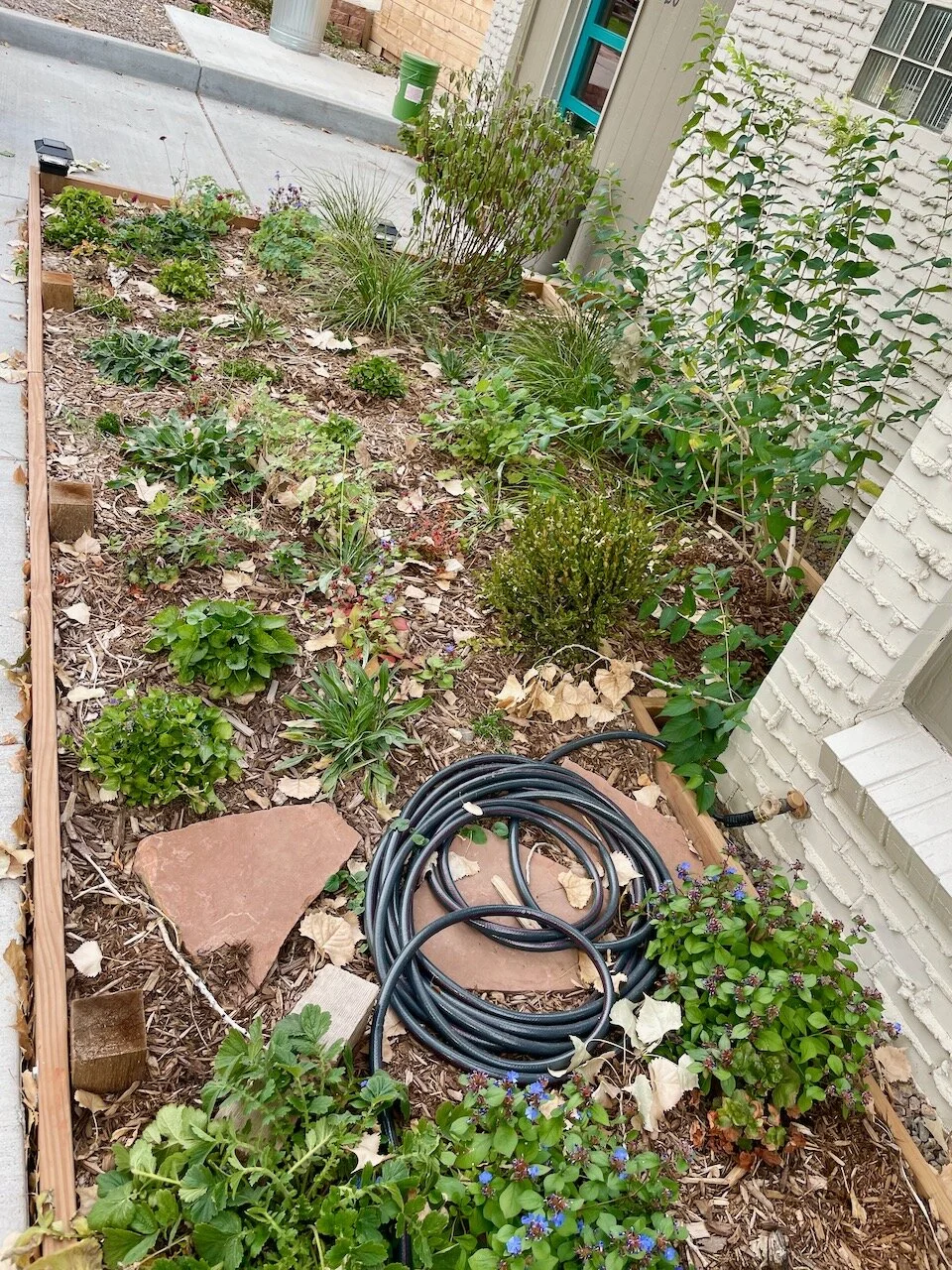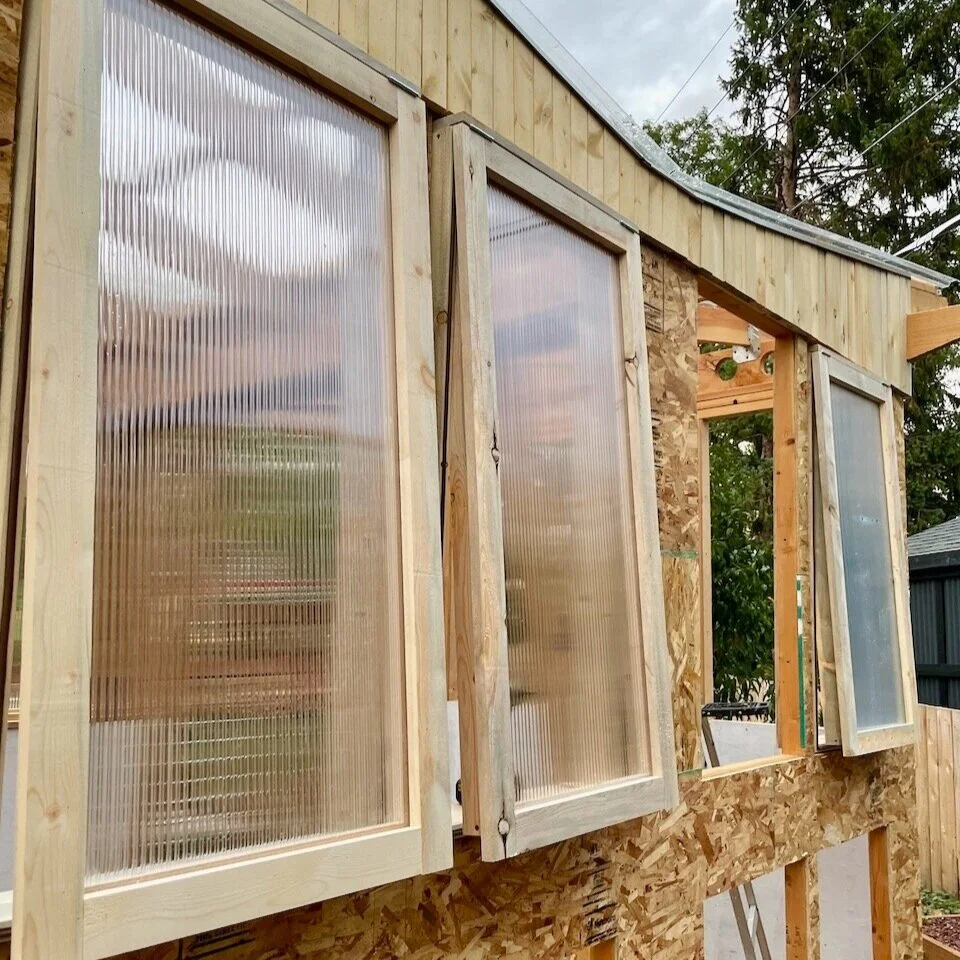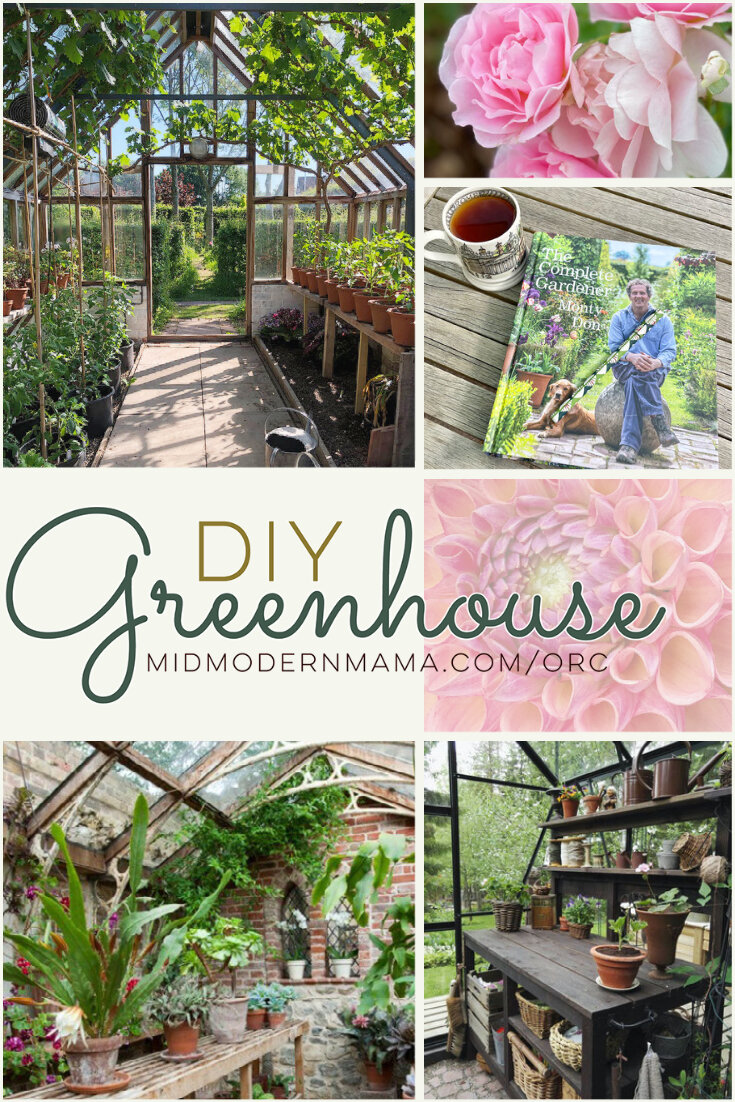Week Three | October 14 | The Greenhouse and Gardening
For the Fall 2021 One Room Challenge we are building a whole room — a greenhouse! And we will be racing the snow to get it done, too. I’ll let you in on the inspiration board as well as plans for my dream greenhouse — a place for starting seedlings, overwintering tender perennials, and extending our short Colorado growing season. Be sure to check in on all of the other ORC projects on the ORC blog here.
Here we are at Week Three! This week has been all about making windows. I know. Making windows seems a little crazy! But it’s what my husband wanted to do — he liked the challenge, and we saved thousands of dollars doing it this way. He wanted them to be a particular size and shape — something which would have been prohibitively expensive to purchase new and impossible to find at a salvage yard. So, he has been making windows. They are gorgeous!
When we replaced our fence early last spring, lumber was very hard to come by and incredibly expensive. But our fence, which was original to our house — so 63 years old — was literally falling down. It had to be done! We also wanted to source our lumber locally — reducing the carbon footprint — and use a local business, many of which were hurting because of the pandemic.
Our solution: Beetle-Kill Pine.
It makes for a beautiful fence! And we bought extra lumber to have on hand for other projects, because finding wood was so difficult at the time. Buying Beetle-Kill Pine cost about 1/3 of what standard fencing materials would have been, and it is a higher quality product.
So guess what we will be using on The Greenhouse: Beetle-Kill Pine! The framing is all from standard lumber, but the cladding and the windows are made from the same materials as our fencing. My husband has been milling wood as he works and creating beautiful windows.
The glazing is cut from Multiwall Polycarbonate Sheets specifically designed for greenhouses. They will be double-glazed with two layers of the polycarb to improve the thermal insulating value of each window. It makes for difuse light, but I don’t think that will be an issue, even in the winter.
Rendering of The Greenhouse as planned
A few months ago I read about Philip Kafka, a real estate developer in Detroit who described what he does as “Home Depot architecture.” This describes my husband, Romano’s, work on our home so well, too. Romano is a licensed architect who specializes in medical architecture — hospitals, medical office buildings, surgery centers. But his passion is Lean architecture — finding efficiency and eliminating waste in all kinds of projects. For example, he once helped a client eliminate several millions of dollars in spending just by reconfiguring the porta-potties for the construction workers on a job site.
His approach to the design at our house, whether it is a raised garden bed, our new pergola, or now The Greenhouse, is much the same: how to use standard materials in a way that maximizes efficiency and eliminates waste. After all waste in materials is financial waste — and ecological waste as well.
So, the dimensions of The Greenhouse — 8’ x 12’ — are also the dimensions of standard lumber which made framing very simple. The windows are sized so that he can get two windows from each sheet of polycarb with only one cut. The examples go on and on…
I will tell you: my brain does not work like this! I would have spent more money on a greenhouse kit with no customization options, and I would have been done. But I am so thankful that his brain does these gymnastics!
One of the last bouquets of the season… I cut these flowers yesterday to sit on my desk. Before the freeze comes, I’ll cut most of the remaining flowers. And then I’ll start planning for next year!
OUr Backyard Garden Beds
All of the raised beds are another example of Romano’s practical design skills at work in our yard. We live on what used to be short grass prairie, home to bison and pronghorn, prairie dogs, wolves, grizzly bears, ferrets, lizards, owls, hawks, turtles, and snakes. Over time the land was converted to ranch and farm land and then developed into a typical 1950s subdivision.
We take our stewardship of this little piece of land very seriously, and part of that stewardship is understanding the history. We are working to repair generations of neglect by gardening organically, removing the turf, welcoming biodiversity, and planting for a more sustainable, diverse, and environmentally-responsible future. Yes, I love my non-native species, but I am working to balance them with native prairie plants, too.
It is a small gesture, but I see gardening as a step toward restitution. Better care of our land. Healing.
So one of the things we have done over the last two years, is add LOTS of raised beds in our backyard using these same principles — creating beds made from lumber with simple cuts and dimensions that are standard and eliminate waste.
Why use raised beds?
We live in Colorado, and the soil on this little plot of land is not great. The topsoil is only a few inches deep and sits on heavy clay below — great for a prairie, not so great for other plants.
So the raised beds are filled with a mixture of top soil, compost, and manure. The compost and manure help it to hold on to moisture (critical here in the high desert) and nourish the plants. I am experimenting with no-dig gardening in these beds — simply adding fresh compost each year, but not mixing or turning the beds.
While many plants may end up rooting down into the ground below the beds, they have several inches of lovely, rich soil before getting into our native soils. The beds don’t have a bottom, so water can flow through and into the ground, and microbes, worms, and fungi can move freely to inhabit the new soil, too.
In all, this summer we built 19 raised beds plus a stumpery and have improved the 4 beds which were here originally. I have plans for more come spring! That’s a lot of beds to fill. I planted perennials almost exclusively this year, and I’m looking forward to starting all kinds of plants from seed and cuttings over the winter.
Raised Beds around our Home
The Greenhouse Progress
DIY Windows in progress
We are expecting frost this week, and while we have been working hard, the plants will have to come inside at night, because The Greenhouse just isn’t quite ready for occupants, yet. As I said before, the big progress this week has been on windows. Each window takes about 90 minutes to make — start to finish. And Romano has made 9 of the 12 windows so far.
Here’s how you build a window in just over one minute:
We did have rain this week, the inside was nice and dry, and the central gutter appears to be working perfectly, so that’s a good thing.
I have been thinking and rethinking and planning and replanning the layout for the inside — storage, work area, shelving, and water storage. I spent all day Monday digging up plants to overwinter, and getting them settled into pots. I will be taking some cuttings, too, and getting them started in the kitchen window until I can move them into The Greenhouse.
Important considerations as I space-plan my little oasis:
a potting area with a dry sink
two rain barrels for runoff from the gutters — these must be raised off the ground for water pressure/drainage
a clean work area so I can bring a laptop out and work in the space
shelving across each window for pots
hooks for hanging baskets
storage under the counters for empty pots, soil, etc.
a large planter for “mother plants” from which to take cuttings regularly
I think I have it all figured out, but I’m not positive about that. Once we have the Trombe Wall in place, I’ll be able to start working in the space.
Goals for this Week:
Finish the roof.
Finish the windows.
Build the cold frames along the back and side wall.
Install the water barrels.
Build the door and install.
Hopefully by next week things will be water-tight. We will see!
Let’s get those windows finished!
The Greenhouse Design Considerations
Heat: a greenhouse that doesn’t require heating except perhaps on the coldest of nights as we won’t be running power to the Greenhouse -- at least initially
Hail: We get frequent hail storms here on the Front Range, so a glass roof is pretty-much out of the question. It must be plastic.
Space: I want to be able to overwinter some plants in the greenhouse as well as starting seedlings and plants from cuttings.
Sunlight: I hope to be able to retreat to this warm, sunny spot on cold days -- allowing me to be outside without being freezing. Perhaps even being able to work on a laptop while soaking in some Vitamin D.
Water: I’ll need to be able to water plants in the winter -- preferably without having to use the hose.
Given all of those constraints, we did a lot of research on keeping greenhouses warm -- and cool. We have worked to maximize the amount of sunlight all day and will be using several layers of plastic to create an insulating layer. We will also be creating a Trombe Wall of sorts to store heat during the day and then radiate that heat into the Greenhouse at night. Any space not needed for sun exposure will be heavily insulated to keep heat in during the winter and out during the summer. We have designed a water-collection system to fill two rain barrels inside the Greenhouse which can then be used to water plants as needed. And the interior has been space-planned for storage as well as work area and spaces for plants of all sizes. More details on all of this and how it works to come!
The DIY Greenhouse will be part science experiment, part engineering problem -- and there will be some fun design challenges, too. I am really looking forward to getting all of these pieces in place and letting them work their magic!
To Linda Weinstein, the creator of the One Room Challenge, I offer my most sincere thanks. Thank you for offering this kind of opportunity and for opening it up to anyone. And to Better Homes and Gardens, the ORC media sponsor: thank you for making this possible! And to all of the other ORC participants: I’ll be sure to stop by to admire your work! It is always fun to do this together!
Ok. Gotta get back to work! Be sure to follow along on Instagram for daily updates. And if you haven’t already, subscribe to my newsletter below so the weekly updates will pop right into your inbox.
Cheers!
Angela
The Fall 2021 ORC Schedule
Week One | Sept 30 | The Before
Week Two | Oct 7 | My Gardening Guru
Week Three | Oct 14 | Garden Beds
Week Four | Oct 21 | Materials & Methods
Week Five | Oct 28 | Construction & Gardening
Week Six | Nov 4 | Making it Beautiful
Week Seven | Nov 11 | Water-Wise Gardening
Week Eight | Nov 18 | Before & After
Thanks to my sponsors for this project! Interested in being a sponsor? Let me know!
Don’t miss a single update!
Sign up and each installment of the One Room Challenge will come directly to your email on Thursdays! And be sure to stop by the One Room Challenge Blog to check out the other creative renovations happening across the country. You can also follow #oneroomchallenge and #bhgorc on Instagram for more inspiration! Be sure to follow me as well!




